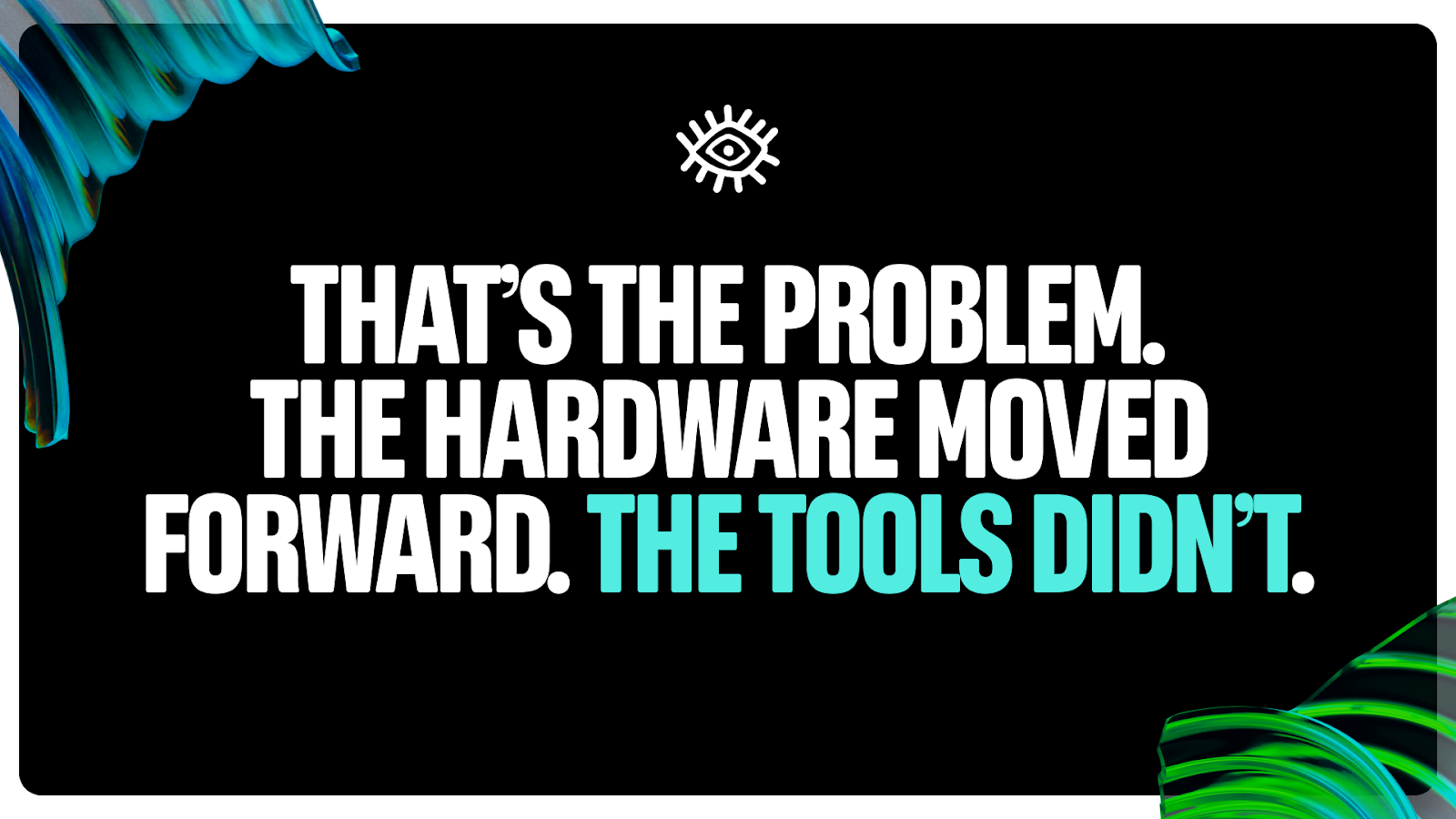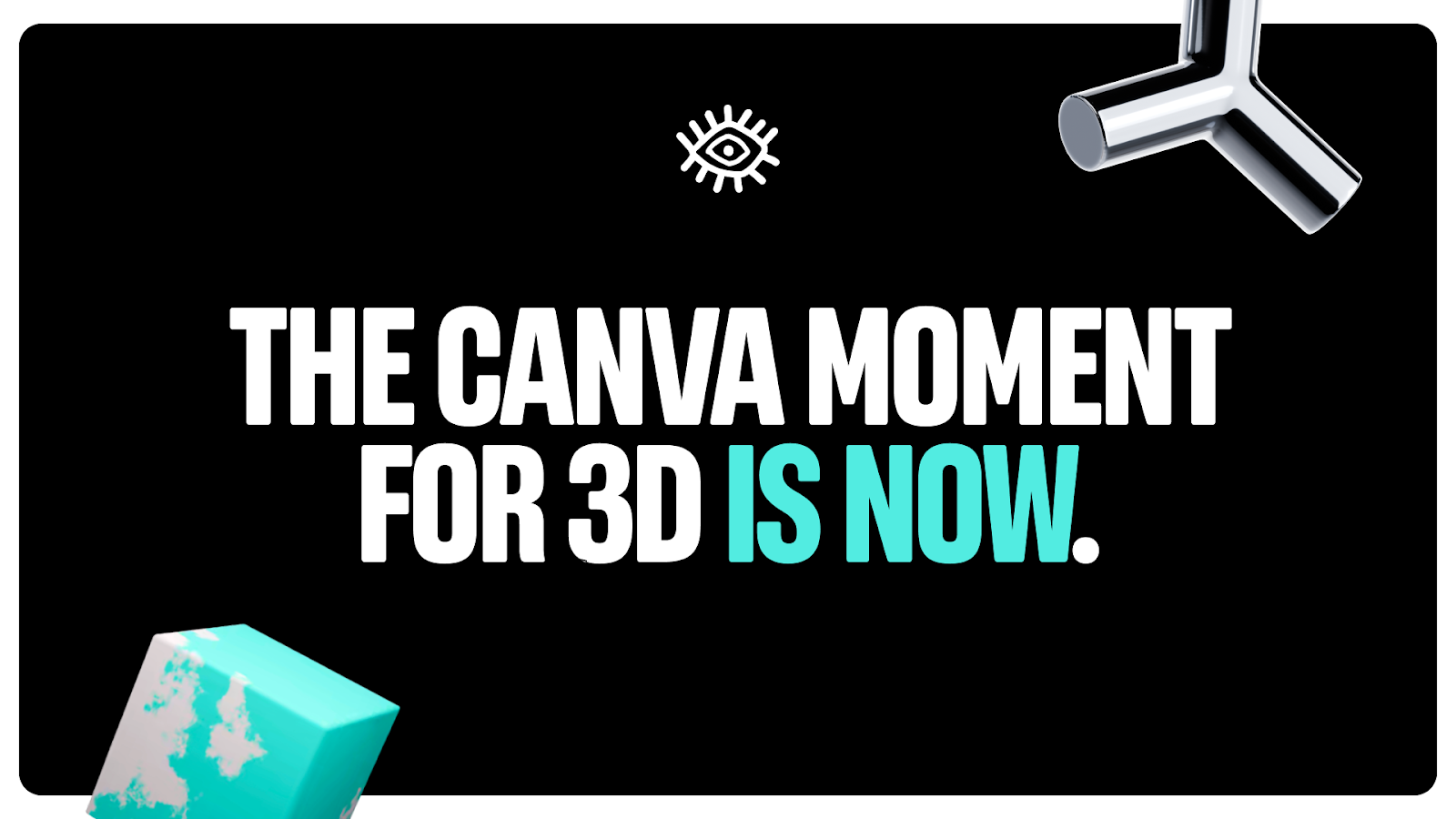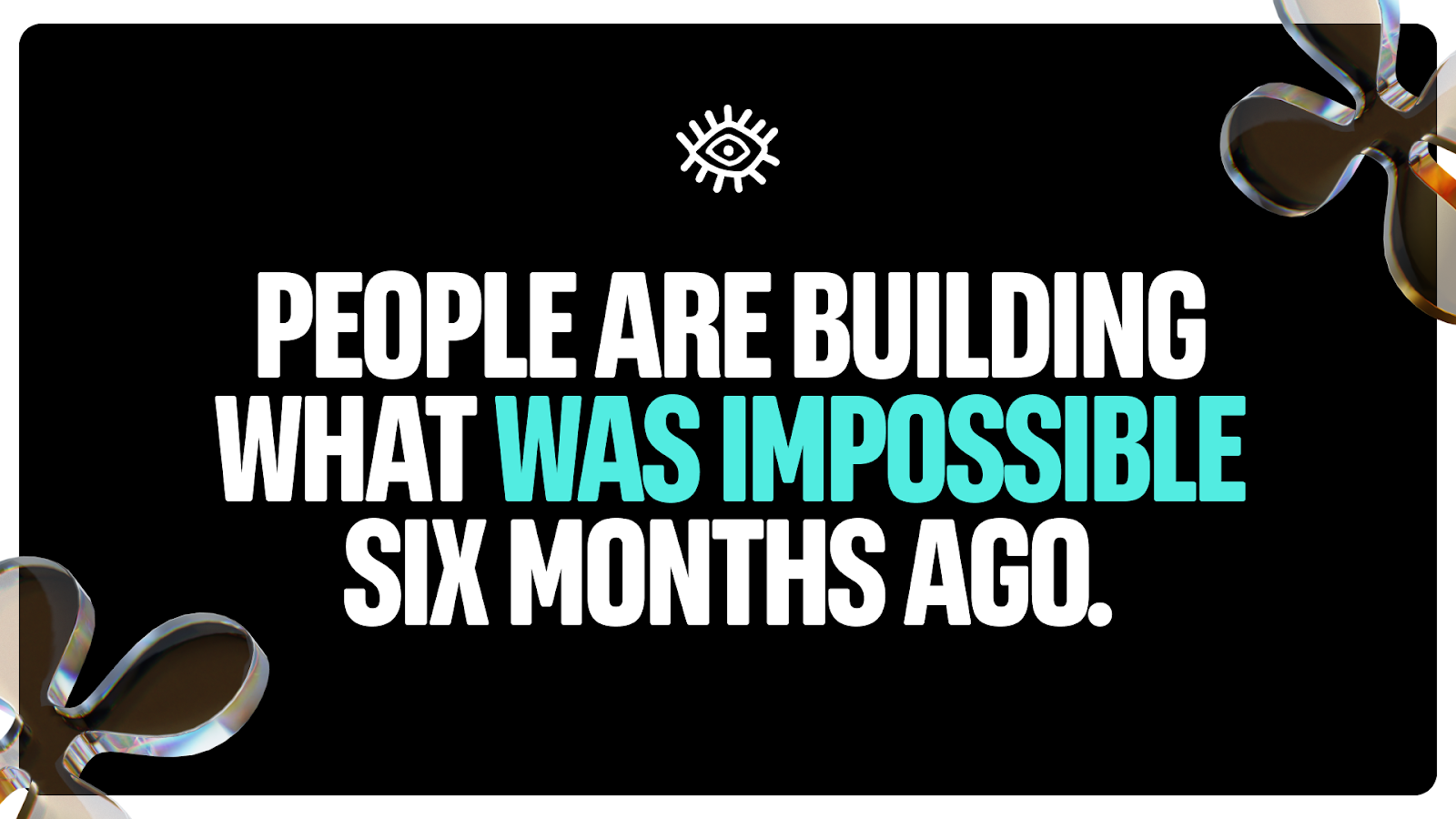The Canva Moment for Spatial Computing Is Here
Creation tools stayed stuck in the past while hardware and AI leapt forward. This is the moment spatial computing becomes accessible to millions of creators. anitya is removing the technical barriers so anyone can build immersive worlds in hours, not months, and finally bring their ideas to life.

I've spent the last three years watching creators bounce off Unity tutorials like they hit a brick wall.
They're not stupid. They're designers, artists, community builders who can see exactly what they want to make. They sketch it out. They describe it perfectly. Then they open Unity and realize they need to learn C# before they can do anything.
Most quit in the first week.
This isn't a new story. We've seen it before.
The Pattern
Photoshop owned design for decades. If you wanted to make something visual, you learned Photoshop or you hired someone who did. Then Canva showed up and said: what if you didn't need to?
240 million people use Canva now. It's worth $42 billion. Not because it made worse design possible, but because it made good design possible for people who'd never touch Photoshop.
Webflow did the same thing for websites. Roblox for games. Same pattern every time: the tools assume you're an expert, someone builds tools that don't, an entire market explodes into existence.
The barrier isn't there to ensure quality. It's there because nobody's removed it yet.

The Spatial Computing Trap
Here's where we are with XR right now.
Vision Pro shipped. Quest 3 is in millions of homes. Google's making AR glasses. The hardware exists. People own it. But if you want to make something for these devices, you're back in 2010 learning game engines.
Unity takes two to three months just to feel comfortable. Unreal takes longer. You need to understand 3D modeling, texturing, animation rigging, physics systems, networking architecture, and about fifteen other specializations before you can ship something simple.
I'm not exaggerating. We've interviewed over a thousand creators. The ones who succeed in XR aren't the most creative. They're the ones who survived the technical gauntlet.
Over 300 million people create content professionally right now. YouTube, TikTok, Instagram, Substack, podcasts. These people understand audiences. They know how to tell stories. They're not technical and they don't need to be.
Except now they do, if they want to build for the next interface.
That's the problem. The hardware moved forward. The tools didn't.

What We Built
We started anitya because this gap felt criminal.
A teacher wants to show her students what a cell looks like from the inside. She can picture it perfectly. In the time it takes her to get through the Unity installation process, she could have sketched twenty versions on paper. But the software treats her like she's trying to build Call of Duty.
So we built something different. You describe what you want or show us an image, we generate the 3D version in seconds. You drag things around to arrange them. You click once and it's live on web, mobile, VR, AR, whatever. The engine underneath is Godot, the same tech powering major games, but you never see it.
Creators with zero 3D experience build their first immersive world in hours now. Not months. Hours.
And here's the part that matters: the work is good. Some of our creators are shipping experiences that rival studio productions. They're just doing it in a tenth of the time because they're spending their energy on creativity instead of fighting the software.

Why This Moment Matters
Three things are converging that rarely line up together.
The hardware's finally real. Not prototype demos at conferences. Actual consumer devices people buy and use. Apple bet big on it. Meta's all in. Google's coming. The install base exists.
AI gave creators superpowers. 300 million people just learned they can generate images, write copy, edit video, and automate workflows that used to take teams. They're hungry for the next canvas. They want to build in 3D and they can finally imagine doing it themselves.
Spatial computing is becoming the default interface. Not for nerds with headsets. For everyone. AR glasses that look normal. Virtual workspaces that actually make sense. Training simulations that beat real-world practice. This is the next twenty years of computing, and the content tools are stuck in 2015.
When hardware, creator capability, and interface shifts align like this, you get Canva moments. The first company to nail it captures enormous value. Canva's at $42 billion. Webflow and Bubble hit $1.8 billion combined. Roblox peaked at $40 billion.
The window's open right now. In two years, maybe three, Big Tech will have locked this down and we'll be stuck with whatever they decide to build.

What's Already Happening
Let me show you what this looks like in practice.
We're running treasure hunts with some of Solana's biggest NFT communities. These are immersive worlds where holders explore, find hidden NFTs, unlock airdrop multipliers. The communities building these don't have Unity developers on staff. They have Discord mods and Twitter personalities and people who understand their culture.
They're building professional XR experiences in days.
Brands that used to spend $200k and six months on a single VR demo are now prototyping five variants in a week. They test what works. They iterate based on actual data instead of guessing in advance.
Teachers are building virtual field trips to places their students could never visit. Not flat 360 videos. Actual explorable 3D spaces with interactive elements and branching paths based on student choices.
We're at 1,500+ creators now, growing 30% month over month. Not one of them is a professional developer.
This is what democratization looks like when it's actually working. Not a marketing claim. Not a vision statement. People making things right now that they couldn't have made six months ago.

The Infrastructure Play
Here's the part most people miss, the part that actually keeps me up at night.
When creation goes spatial, attribution becomes infrastructure. Not a feature. Infrastructure.
Think about it. You build a world using someone's 3D asset pack. You adapt another creator's interaction logic. You remix a template someone else made. In traditional media, you'd credit them in the description. In spatial computing, where experiences are built from hundreds of composable pieces, that breaks down immediately.
You need systems that track creative DNA automatically. That flow fair compensation in real time. That work across platforms instead of locking everything into walled gardens.
Roblox pays creators but takes 75% off the top. That's not a sustainable model when you're trying to build an economy.
Story Protocol recently surpassed $9 billion FDV building attribution infrastructure for creative work. The market understands this matters. Roblox pays out over $1 billion annually to creators. The business model exists.
But right now, there's a two to three year window before the big platforms lock this down with proprietary systems that serve them instead of creators. After that, we're stuck with whatever they built.
That's what we're really building at anitya. Not just easier tools. The infrastructure layer that makes fair attribution automatic, that lets creators actually own what they make, that ensures when someone builds on your work, you benefit from it.

What Comes Next
The XR market is somewhere between $44 billion and $1.6 trillion by 2030, depending which analyst you trust. The creator economy is sitting at $205-225 billion heading toward $850 billion to over $1.3 trillion by 2032.
But none of those numbers matter if only 0.1% of creators can actually build for it.
The hardware's ready. The creators are ready. For the first time, the tools are starting to catch up.
This is the Canva moment for spatial computing. It's happening right now. And what we build in the next two years will determine how the next twenty years of computing actually work.
Want to see what you can build in hours instead of months? Try anitya. No code required.
Learn More About anitya
Ready to start building?
- Create 3D/VR experiences without code: https://app.anitya.space
- Join our community: https://discord.gg/JU2uxvMYqk
- Follow us: https://x.com/anitya_space
- Earn rewards for contributing to our ecosystem: https://earn.anitya.space/
